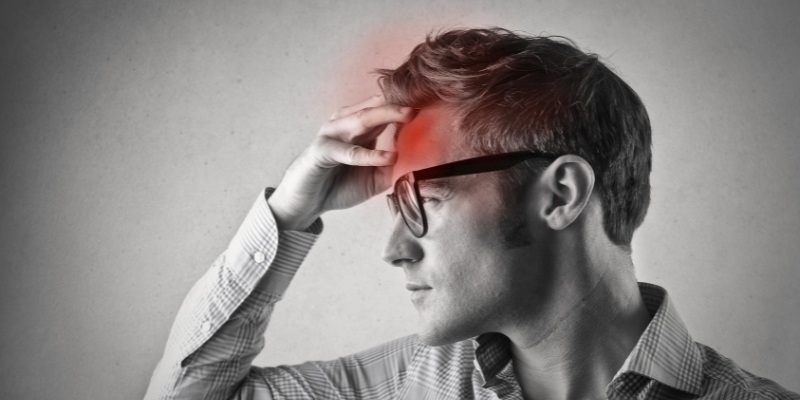Are you curious about the buzz surrounding Kratom?
Kratom, a tropical evergreen tree, is quickly gaining popularity as a natural discomfort relief, uneasiness, and low mood remedy. However, some users have reported experiencing headaches after taking Kratom, raising concerns about its side effects. If you’re wondering if Kratom can cause headaches, you’re not alone. In this article, we’ll delve into the possible connection between Kratom use and headaches, and what steps you can take to prevent or alleviate them. So, let’s get started!
What Causes Headaches When Taking Kratom?
Kratom, a natural herb, has been gaining popularity for its potential health benefits. While many people use Kratom as a natural relief and remedy, some users have reported experiencing headaches after taking Kratom. Although the exact cause of Kratom-induced headaches is not yet fully understood, there are several possible explanations.
One possible explanation is that Kratom can cause dehydration, which is a common cause of headaches. Kratom can act as a diuretic, causing increased urination and leading to fluid loss in the body. This can cause dehydration and result in headaches, especially if the user does not drink enough water.
Another possible cause of headaches when taking Kratom is due to its stimulant effects. Kratom contains alkaloids that can activate the sympathetic nervous system, leading to vasoconstriction, or the narrowing of blood vessels. This can cause a reduction in blood flow to the brain, which can result in headaches.
Additionally, Kratom may cause headaches if taken in excessive doses or if used for an extended period. Kratom contains compounds that can bind to the receptors in the brain, leading to changes in brain chemistry. This can result in withdrawal symptoms, including headaches, when the user stops taking Kratom or reduces their dosage.
Lastly, Kratom can cause headaches if it is mixed with other substances, such as alcohol or caffeine. These substances can interact with Kratom and amplify its effects, leading to headaches and other adverse effects.
Different Types of Kratom Headaches and Their Symptoms
Kratom-induced headaches can be broadly categorized into two types: tension headaches and migraines.
Tension headaches are the most common type and are often described as dull, squeezing discomfort that affects both sides of the head. The pain can be mild to moderate and can last for a few hours to a few days. Other symptoms of tension headaches may include sensitivity to light and sound, muscle tension, and fatigue.
Migraine headaches are less common but can be more severe than tension headaches. They are often described as a throbbing or pulsing pain on one side of the head and can be accompanied by nausea, vomiting, and sensitivity to light and sound. Migraine headaches can last for several hours to a few days and can significantly impact daily activities.
It is important to note that some Kratom users may not experience headaches at all, while others may experience a combination of tension and migraine headaches. The severity and duration of headaches can also vary depending on factors such as the dosage, frequency of use, and individual sensitivity.
If you experience frequent headaches or other adverse effects while taking Kratom, it is recommended to stop using it and consult with a healthcare professional. Additionally, following recommended dosages, staying hydrated, and avoiding mixing Kratom with other substances can help reduce the risk of headaches and other adverse effects.
Preventing and Managing Kratom-Related Headaches
Kratom-related headaches can be an unpleasant side effect for some users. However, there are strategies that can help prevent and manage these headaches.
- Staying hydrated: As Kratom can cause dehydration, it is essential to drink plenty of water while using it. Aim to drink at least 8-10 glasses of water a day to stay hydrated.
- Following recommended dosages: Taking Kratom in excessive doses or using it for an extended period can increase the risk of headaches and other adverse effects. It is crucial to follow recommended dosages and not exceed them.
- Taking breaks: Taking regular breaks from Kratom use can help prevent tolerance and reduce the risk of withdrawal symptoms, including headaches.
- Using a strain with low alkaloid content: Different strains of Kratom contain varying levels of alkaloids, which can affect their effects on the body. Using a strain with low alkaloid content may reduce the risk of headaches and other adverse effects.
- Managing stress: Stress can be a trigger for headaches, and managing stress levels through techniques such as meditation or exercise can help prevent Kratom-related headaches.
If you experience headaches while taking Kratom, there are several ways to manage them, including:
- Taking a break from Kratom use: This can help reduce the risk of tolerance and withdrawal symptoms, including headaches.
- Taking over-the-counter pain medications: Over-the-counter discomfort medications such as ibuprofen or acetaminophen can help relieve headaches.
- Applying heat or cold: Applying heat or cold to the affected area can help reduce headache pain.
- Getting rest: Getting enough rest and sleep can help alleviate headaches and prevent them from occurring.
When to Seek Medical Help for Kratom-Induced Headaches
While Kratom is generally considered safe when used in moderation, it can cause headaches and other adverse effects, which may warrant medical attention. Here is when you should seek medical help for Kratom-induced headaches.
- If the headaches are severe: Severe headaches can be a sign of a more serious underlying condition, and it is important to seek medical attention if the pain is intense and debilitating.
- If the headaches are persistent: If you experience headaches for an extended period, it may be a sign of a more chronic condition that requires medical attention.
- If the headaches are accompanied by other symptoms: If your headaches are accompanied by other symptoms such as nausea, vomiting, or visual disturbances, it may be a sign of a more serious condition and warrant medical attention.
Other Possible Side Effects of Kratom Use
While Kratom is generally considered safe when used in moderation, it can cause other adverse effects in addition to headaches. Here are some of the other possible side effects of Kratom use:
- Nausea and vomiting: Kratom can cause nausea and vomiting, particularly when taken in excessive doses or on an empty stomach.
- Constipation: Kratom can slow down the digestive system, leading to constipation.
- Dizziness and drowsiness: Kratom can cause dizziness and drowsiness, particularly when taken in high doses. It can also impair motor function and cause difficulty in concentrating. Other possible side effects of Kratom use include dry mouth, loss of appetite, and increased urination. If you experience any adverse effects while using Kratom, it is recommended to stop using it and consult with a healthcare professional.
Conclusion: Is Kratom Safe for Headache Sufferers?
In summary, Kratom can be a helpful natural remedy for those seeking relief from discomfort. However, it is essential to be mindful of the potential side effects, including headaches, and take steps to prevent and manage them. While Kratom is generally safe when used in moderation, it is always wise to consult a healthcare professional before using it, particularly if you have a history of health conditions or are currently taking medication. By being mindful of the risks and using Kratom responsibly, it is possible to find relief from headaches and other ailments while enjoying the benefits of this natural remedy.



